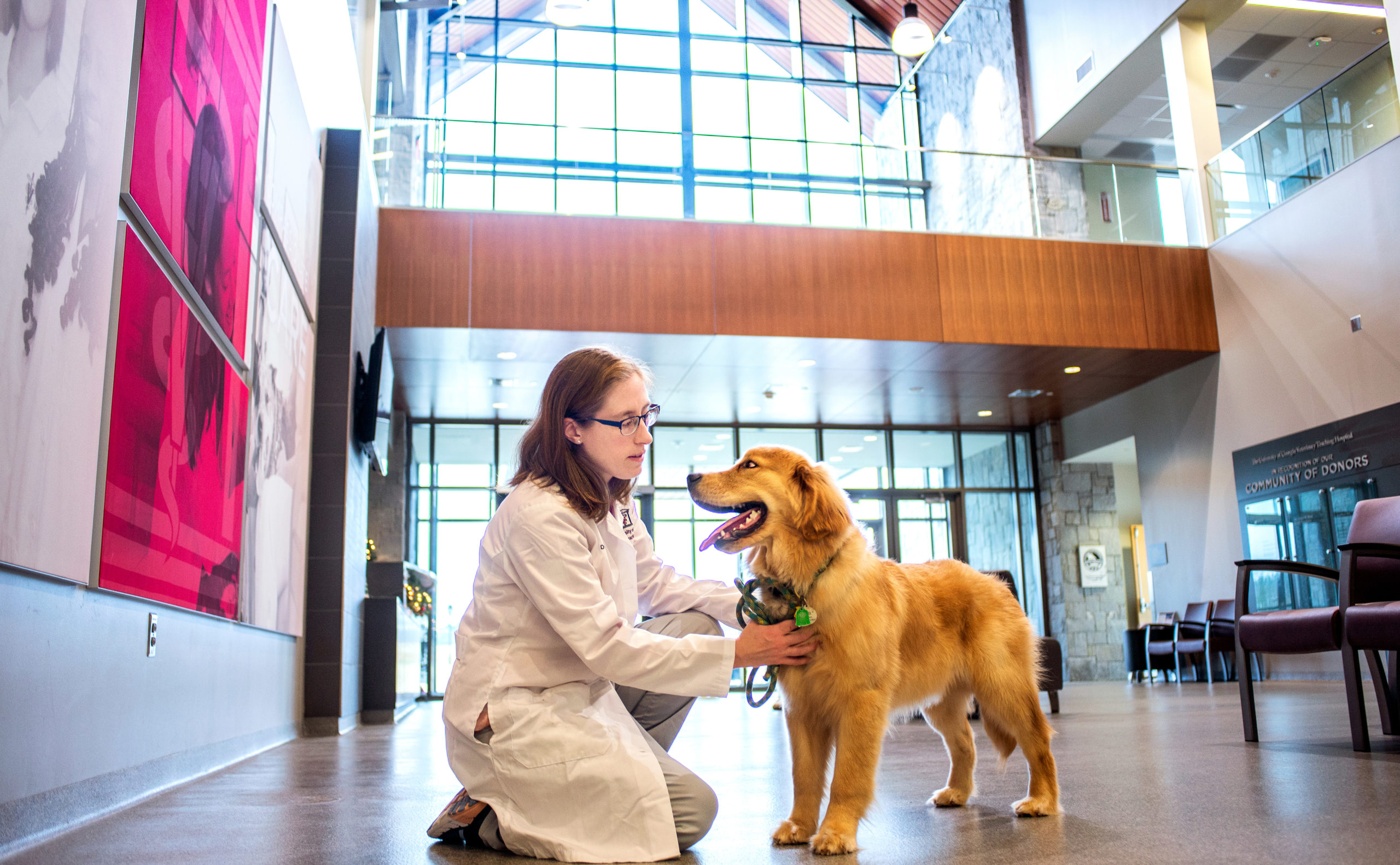The College of Veterinary Medicine is a busy place with many moving parts. Our teaching hospital is not just a hands-on classroom for clinical students, but a medical service for our community. Our clinical faculty members provide guidance for students and care for our patients. At the same time, many of them are also researchers seeking answers to the health-related questions plaguing humans and animals alike, and woven through it all is the mission to educate the next generation of veterinarians year after year. Occasionally, these threads all intersect.
Learning surgical skills is a difficult task. Surgeons must be observant of both their surroundings and their patients—but they must also simply know how a specific procedure feels. The responsibility for teaching these skills falls to our faculty; it creates a drive that pushes these educators and clinicians to constantly evaluate, adapt, and improve teaching methods in an ever-evolving environment. In a recent study, aptly titled Evaluation of surgical models for training veterinary students to perform enterotomies and published in Veterinary Surgery, faculty compared interactions and reactions to both synthetic and genuine surgical models as students learned the skills necessary for performing an enterotomy.
An enterotomy is a common procedure in veterinary practice, and the skills necessary for performing them are invaluable to fledgling veterinary students. This procedure, literally a surgical incision into the intestine of the patient, can be performed for a simple biopsy—but due to animal eating habits, specifically eating things that should not be eaten, an enterotomy can also be a life-saving surgery to remove an obstruction.
Where no model is an exact replica of the genuine procedure, both students and faculty agreed that each model has its place in replicating the look and feel of a live surgery—and authentic intestinal tissues were preferred overall. “It is important that we take the time to perform studies like this,” says Janet Grimes, assistant professor of small animal surgery. “Studies like this give us insight into our methods and how they can be improved. Our goal is to provide our students with the best education and experience possible.”
Thomas Bevelock was a second-year DVM student when this study began. Taking part allowed him to begin practicing these skills earlier in his curriculum than was customary and gave him the fortuitous opportunity to work with all the teaching models available. During his fourth year of training, Thomas had the opportunity to aid in performing this exact procedure on a faculty-owned cat. “Personally, I believe I was more prepared for assisting with the surgery because of my prior practice with the models,” explains Dr. Bevelock.
Bevelock has since graduated and is an intern at the University of Missouri. In the future, he will undoubtedly perform countless enterotomies and other surgeries. But his experience in both this study and in actual practice has left him feeling better prepared for life as a veterinarian. He concludes, “investigation should be done prior to implementing learning tools on future medical professionals, as it can make all the difference in our training, and thus, the well-being of our future patients.
